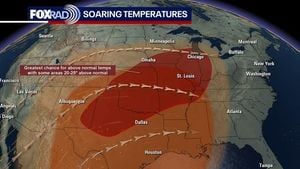On September 9, 2025, the U.S. Supreme Court delivered a seismic ruling that has sent shockwaves through immigrant communities, civil rights advocates, and legal scholars nationwide. In a 6-3 decision, the Court gave the Trump administration a green light to resume controversial immigration raids in Southern California, allowing federal agents to detain individuals based on race, accent, or place of work. This move overturned a lower court’s injunction that had deemed such practices unconstitutional, reigniting fierce debate about the boundaries of law enforcement and the protection of civil liberties in America.
The case at the center of this storm, Noem v. Vasquez Perdomo, revolves around “Operation at Large,” a sweeping Immigration and Customs Enforcement (ICE) dragnet in and around Los Angeles. According to Slate, ICE officers, often masked and heavily armed, targeted public spaces where Latinos are known to gather—Home Depots, car washes, bus stops, churches, and parks. Their approach? Arrest people who “appeared” Latino or spoke Spanish, and only afterward check their citizenship status. The result, as documented by The Economic Times and plaintiffs in the case, was that even U.S. citizens were stopped, searched, and interrogated—sometimes violently—without warrants or reasonable suspicion.
“We should not have to live in a country where the government can seize anyone who looks Latino, speaks Spanish, and appears to work a low-wage job,” wrote Justice Sonia Sotomayor in her blistering dissent, joined by Justices Elena Kagan and Ketanji Brown Jackson. She warned that the majority’s decision “opens the door to violent persecution of Latinos—including American citizens—by masked agents with guns.” Her words, reported by Slate, cut to the heart of the anxieties now gripping millions of Latinos in California and beyond.
The lower courts had previously sided with the victims. A federal district court found that ICE’s tactics in Operation at Large flagrantly violated the Fourth Amendment, which protects against unreasonable searches and seizures. The court barred arrests based on four factors—appearing Hispanic, speaking Spanish or accented English, working certain jobs, or being present in immigrant-heavy areas—alone or in combination. An appeals court upheld this injunction, but the Trump administration sought emergency relief from the Supreme Court, which was granted without explanation.
This lack of reasoning, a hallmark of the so-called “shadow docket,” has become a recurring theme under the Court’s conservative supermajority. As Slate points out, the justices’ silence leaves lower courts and the public guessing about the legal rationale, creating confusion and uncertainty about the future of constitutional protections. Some judges may hesitate to protect the rights of Latinos for fear of being overruled, while others might attempt to carve out new defenses, but at the risk of criticism from higher courts.
Attorney General Pam Bondi, a vocal supporter of the administration’s hardline immigration policies, hailed the ruling as a “massive victory” and pledged that “roving patrols” would continue. For many, this statement confirmed their fears that the decision would embolden aggressive enforcement tactics and further erode trust between law enforcement and immigrant communities.
The Supreme Court’s majority did not respond to the dissent’s extraordinary charges, but Justice Brett Kavanaugh offered a separate concurrence. He claimed that ICE was merely conducting “brief investigative stops” and quickly released lawful residents. Kavanaugh argued that ethnicity could be a “relevant factor” in determining unlawful presence. However, Sotomayor forcefully rejected this narrative, stating in her dissent, “ICE is not conducting brief stops for questioning. Its agents are seizing people using firearms, physical violence, and warehouse detentions.” She warned that Kavanaugh’s position would force all Latinos to “carry enough documentation to prove that they deserve to walk freely,” effectively creating “second-class citizenship status.”
This new reality has left many Californians—citizens and non-citizens alike—living in fear. As reported by American Urban Radio Networks, civil rights groups have called the ruling “racism with a badge,” arguing that it gives law enforcement unchecked power to target individuals based on appearance and language. Plaintiffs in the case, some of them American citizens, described being “grabbed, thrown to the ground, and handcuffed simply because of their looks, their accents, and the fact they make a living by doing manual labor.” These accounts, echoed in multiple outlets, highlight the tangible human costs of the Court’s decision.
Beyond the immediate impact in Southern California, legal experts warn that the ruling sets a dangerous precedent for the rest of the country. With the Supreme Court’s implicit blessing, similar ICE raids could expand nationwide, affecting not only undocumented migrants but also lawful residents and citizens. The line between lawful arrest and illegal detention, critics say, is becoming increasingly blurred as unidentified agents seize people off the streets without due process.
Justice Sotomayor’s dissent also pointed to the broader erosion of constitutional guarantees. She wrote, “The freedom from arbitrary interference by law officers is a constitutional guarantee. Yet, under Trump, it may no longer exist for those who happen to look a certain way, speak a certain way, and appear to work a certain type of legitimate job that pays very little.” Her words resonate deeply in a nation grappling with its identity and the meaning of equal protection under the law.
The decision’s ripple effects are already being felt. According to Slate, some lower courts may attempt to interpret the ruling narrowly, seeking ways to protect constitutional rights despite the Supreme Court’s silence. Others, wary of being overruled or criticized by conservative justices, might refrain from intervening in future cases, potentially leaving millions vulnerable to similar practices. Meanwhile, the Trump administration’s aggressive enforcement agenda shows no sign of slowing down, with ICE raids poised to intensify in other states.
For immigrant communities, advocates, and many legal observers, Monday’s ruling is a stark reminder of the fragility of constitutional protections in times of political upheaval. The Court’s decision, rendered without explanation and over the passionate objections of its liberal justices, has upended decades of precedent and left the fate of millions hanging in the balance. As the dust settles, one thing is clear: the debate over immigration, civil rights, and the power of the state is far from over, and the consequences of this ruling will reverberate for years to come.






